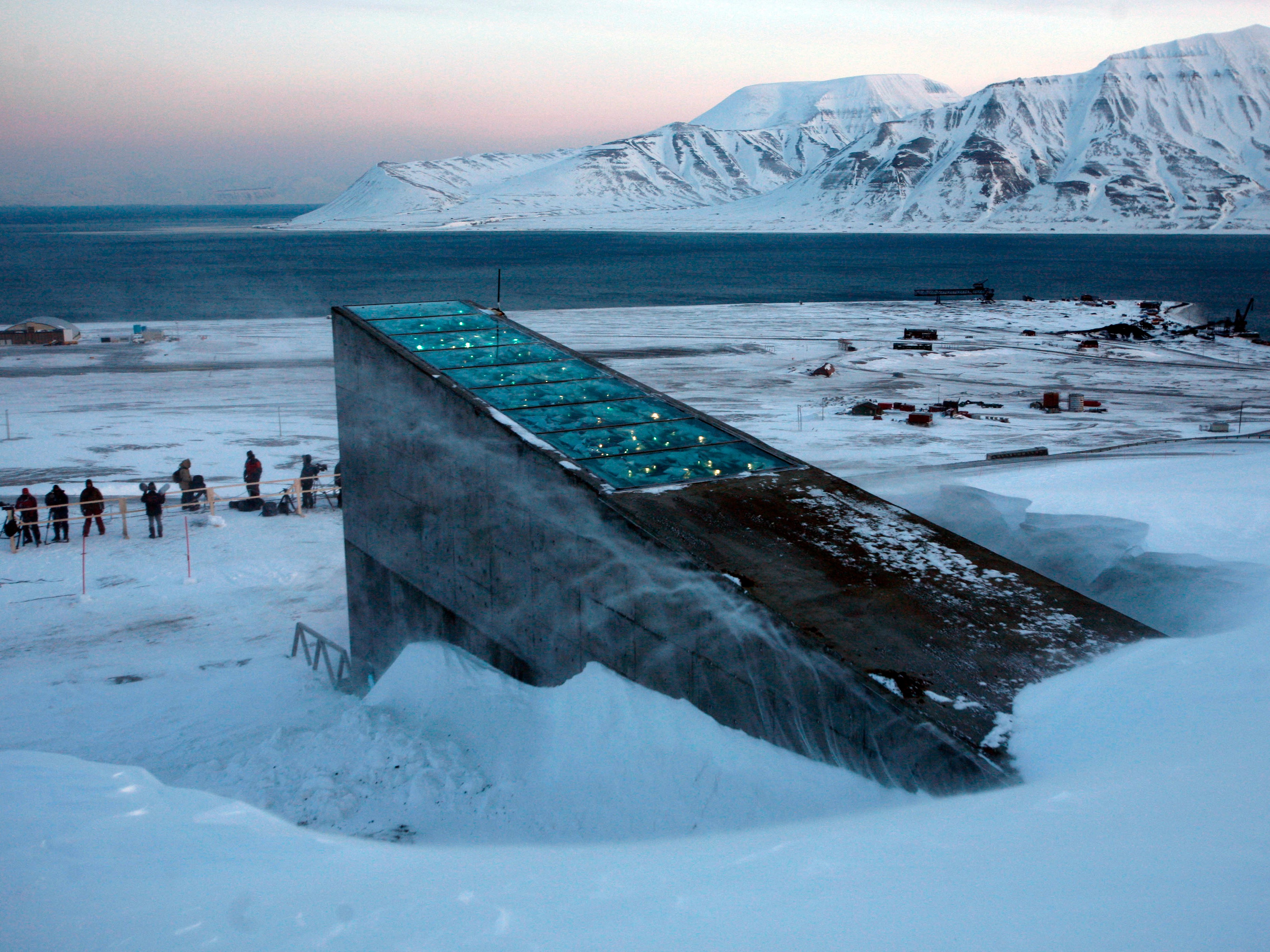We’ve long imagined scenarios in which, because of disaster, climate change, or nuclear war, life as we know it comes to an end, with parts of the earth rendered inhospitable with widespread environmental devastation.
Hidden approximately 400 feet deep inside a mountain on a remote island between mainland Norway and the North Pole, the Svalbard Global Seed Vault is designed to come to our rescue if that happens.
It stores valuable seeds from crops all over the world, and recently, because of the Syrian civil war, it came to humanity’s aid for the first time.The vault is not open to the public, but you can see what it’s like below:
Svalbard is the northernmost place in the world that still has scheduled flights, according to The Crop Trust, the group in charge of the global seed-bank system.

Source: The Crop Trust
It's more than 400 feet above sea level, and there's little moisture in the air.

Source: The Crop Trust
Since the vault is buried in permafrost, it could stay frozen at least 200 years, even if the power were to go out.

Source: Reuters
The vault has seeds from more than 60 institutions and almost every country in the world, collected from the more than 1,500 global gene banks that store samples of seeds from all the crops native to the region they're in.

Source: The Crop Trust
The Svalbard vault is the central fail-safe for all those seed banks.

Source: The Crop Trust
Backups are sent to Svalbard in case a disaster ruins the samples at the home seed bank.

Source: The Crop Trust
That way, the genetic diversity of crops around the world is kept safe.

Seed samples are sent to Svalbard in large boxes, which are scanned with X-rays after they get to the island to make sure that they have nothing but seeds inside.

Source: The Crop Trust
The rooftop and part of the facade of the building is a work of art with a light installation by Dyveke Sanne, since all public buildings in Norway are legally required to have art.

Source: The Crop Trust
The vault is unlocked only for deposits, which happen three or four times a year.

Source: The Crop Trust
There are five doors with coded locks that anyone looking to get into the vault has to pass through.

Source: The Crop Trust
Plus, The Crop Trust says that polar bears — which outnumber humans on the island — provide an extra "layer of security."

Source: The Crop Trust
The temperature inside is kept to -18 degrees Celsius, cold enough to keep the sealed seeds viable for — in some cases — thousands of years.

Source: The Crop Trust
Inside, seeds are moved to a trolley and rolled into the vault's main chamber.

Source: The Crop Trust
So far, there are more than 860,000 samples in the vault, collected since Svalbard opened in 2008. Each sample contains 500 seeds.

Source: The Crop Trust
But there's enough space in the vault's three main rooms to store 4.5 million samples, which would be more than 2 billion seeds.

Source: The Crop Trust
The seeds arrive sealed in foil and are kept inside sealed boxes to prevent any spoilage.

Source: The Crop Trust
In 2015, the ICARDA Seed Bank, which had been in Syria, withdrew samples from the vault — a first — so it could move and restore its seed bank, which had been damaged by war.

Source: Tech Insider
That showed that the vault could serve its function, but hopefully there will be no need for another withdrawal in the near future. "It illustrates why we built it," Cary Fowler tells my colleague Lydia Ramsey. "Loss of that collection would be irreplaceable. ... I tell people it's a great story — a sad story — of the seed vault functioning as an insurance policy."

Source: Business Insider

